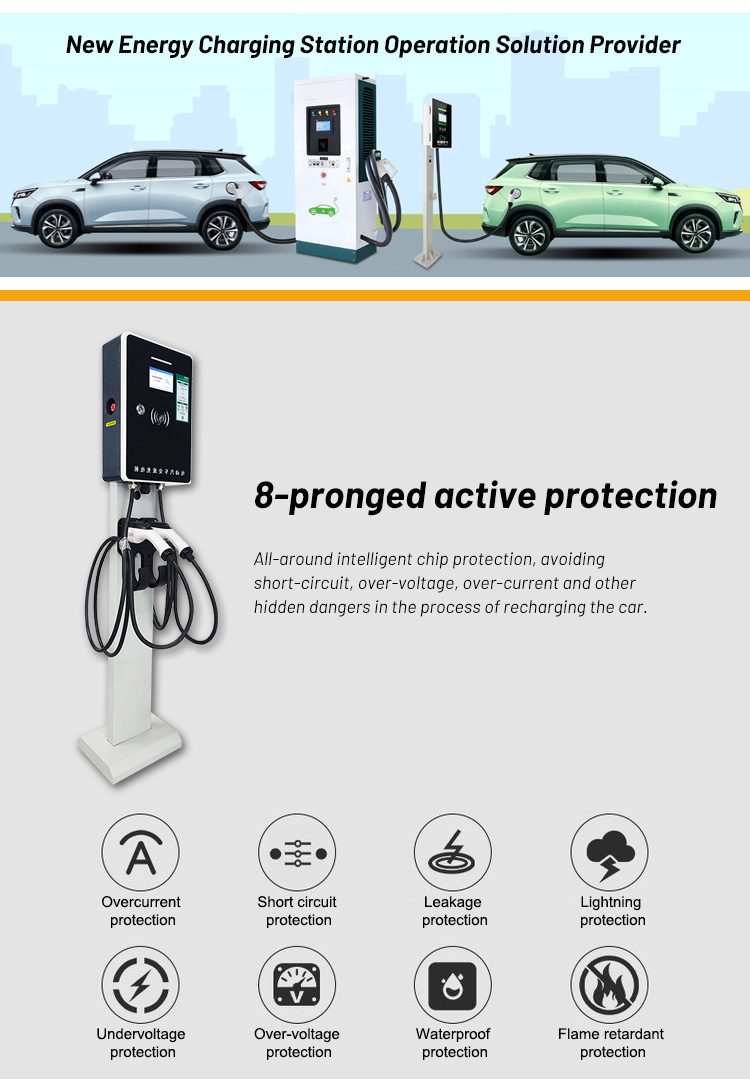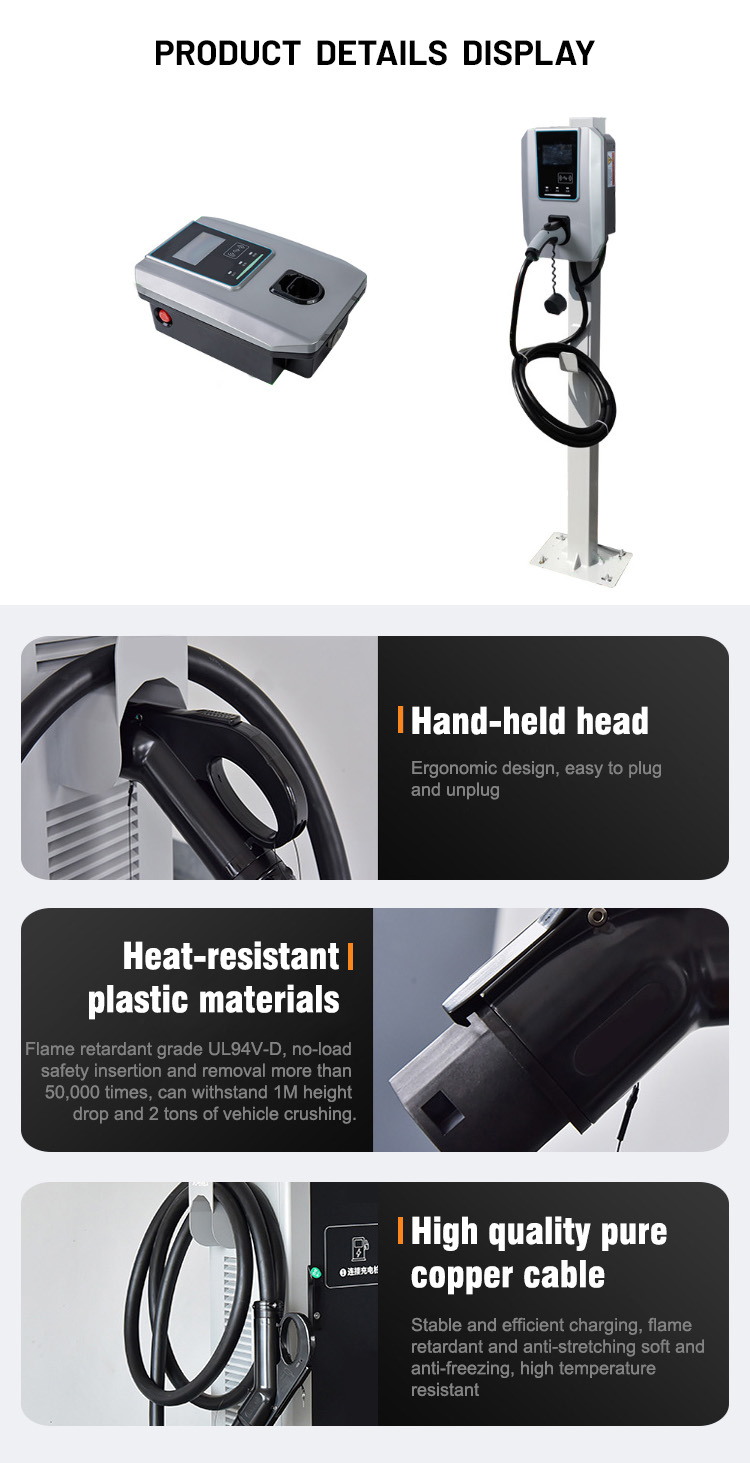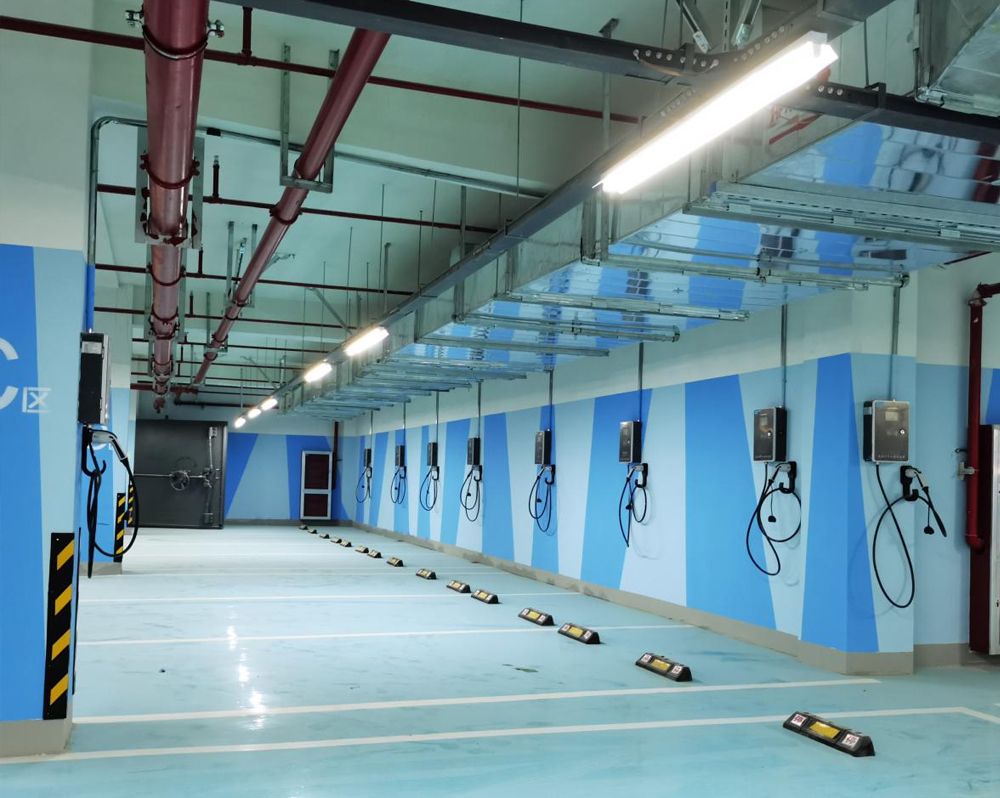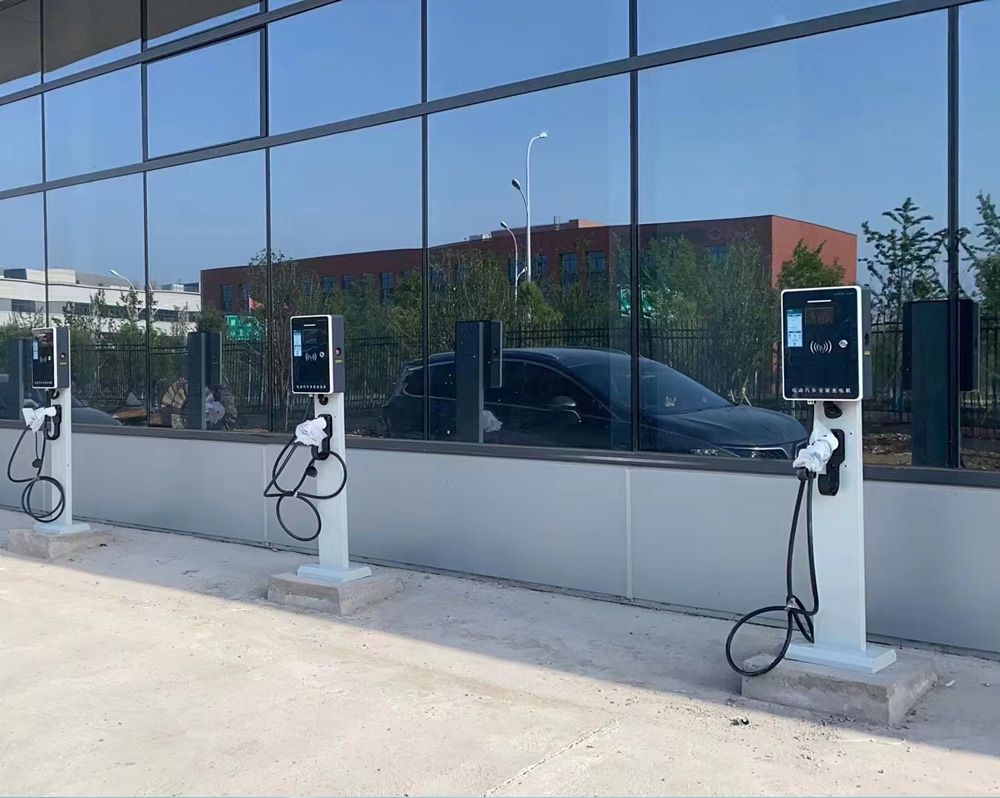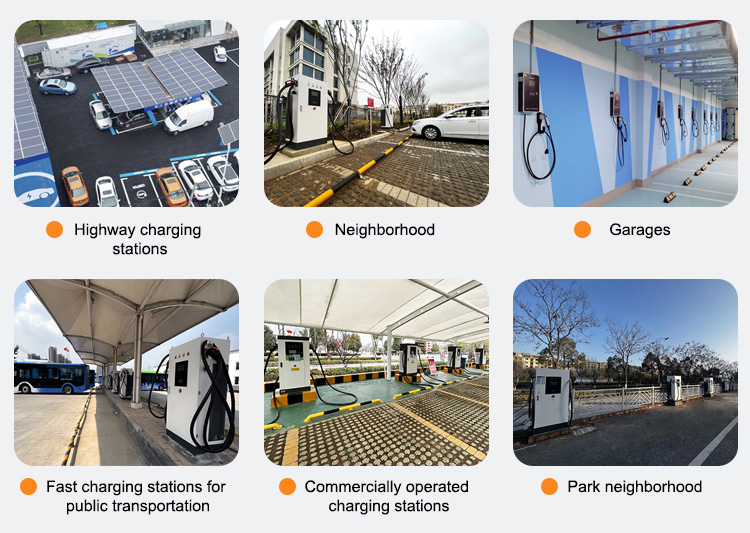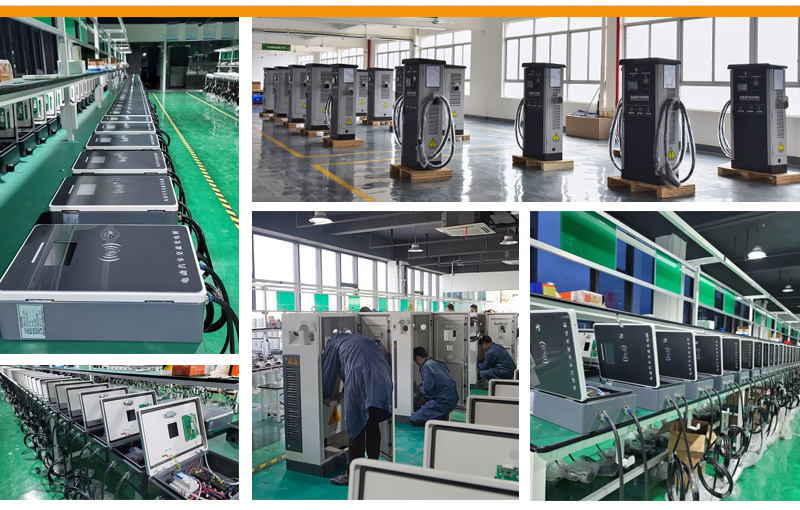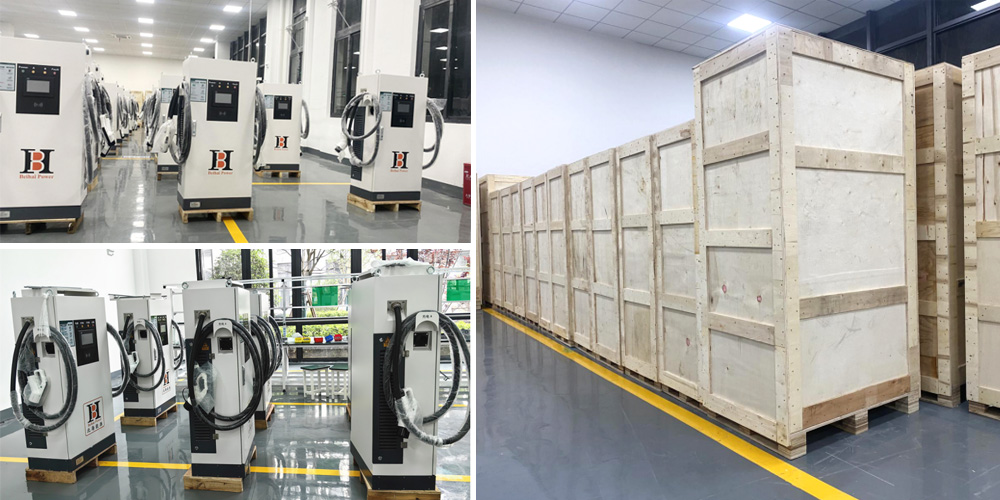ICE2/GB 24KW 48KW Three-phase EV charging station 63A 380V AC EV Charger
Product Description:
An AC charging pile is a charging device designed for electric vehicles, mainly for slow charging of electric vehicles by providing stable AC power to the on-board charger (OBC) on the electric vehicle. AC charging pile itself does not have direct charging function, but needs to be connected to the on-board charger (OBC) on the electric vehicle to convert AC power to DC power, and then charge the battery of the electric vehicle, this charging method occupies an important position in the market for its economy and convenience.
Although the charging speed of AC charging station is relatively slow and takes a long time to fully charge the battery of an electric vehicle, this does not detract from its advantages in home charging and long parking charging scenarios. Owners can park their EVs near the charging piles to charge at night or during free time, which does not affect daily use and makes full use of charging during the grid’s low hours to reduce charging costs. Therefore, AC charging pile has less impact on the grid load and is conducive to the stable operation of the grid. It does not need complex power conversion equipment, and only needs to provide AC power directly from the grid to the on-board charger, which reduces energy loss and grid pressure.
In conclusion, the technology and structure of AC charging pile is relatively simple, with low manufacturing cost and affordable price, which makes it suitable for wide application in scenarios such as residential districts, commercial car parks and public places. It can not only meet the daily charging needs of electric vehicle users, but also provide value-added services for car parks and other places to enhance user experience.
Product Parameters:
| IEC-2 80KW AC Double Gun (wall and floor) charging pile | ||
| unit type | BHAC-63A-80KW | |
| technical parameters | ||
| AC input | Voltage range (V) | 480±15% |
| Frequency range (Hz) | 45~66 | |
| AC output | Voltage range (V) | 380 |
| Output Power (KW) | 24KW/48KW | |
| Maximum current (A) | 63A | |
| Charging interface | 1/2 | |
| Configure Protection Information | Operation Instruction | Power,Charge,Fault |
| machine display | No/4.3-inch display | |
| Charging operation | Swipe the card or scan the code | |
| Metering mode | Hourly rate | |
| Communication | Ethernet(Standard Communication Protocol) | |
| Heat dissipation control | Natural Cooling | |
| Protection level | IP65 | |
| Leakage protection(mA) | 30 | |
| Equipment Other Information | Reliability (MTBF) | 50000 |
| Size (W*D*H) mm | 270*110*1365 (floor)270*110*400 (Wall) | |
| Installation mode | Landing type Wall mounted type | |
| Routing mode | Up (down) into line | |
| Worksing Environment | Altitude (m) | ≤2000 |
| Operating temperature(℃) | -20~50 | |
| Storage temperature(℃) | -40~70 | |
| Average relative humidity | 5%~95% | |
| Optional | 4G Wireless Communication | Charging gun 5m |
Product Feature:
Compared with DC charging pile (fast charger), AC charging pile has the following significant features:
1. Smaller power, flexible installation: the power of AC charging pile is generally smaller, the common power of 3.3 kW and 7 kW, the installation is more flexible, and can be adapted to the needs of different scenes.
2. Slow charging speed: limited by the power constraints of vehicle charging equipment, the charging speed of AC charging piles is relatively slow, and it usually takes 6-8 hours to be fully charged, which is suitable for charging at night or parking for a long time.
3. Lower cost: due to the lower power, the manufacturing cost and installation cost of AC charging pile is relatively low, which is more suitable for small-scale applications such as family and commercial places.
4. Safe and reliable: During the charging process, the AC charging pile finely regulates and monitors the current through the charging management system inside the vehicle to ensure the safety and stability of the charging process. At the same time, the charging pile is also equipped with a variety of protection functions, such as preventing over-voltage, under-voltage, overload, short-circuit and power leakage.
5. Friendly human-computer interaction: The human-computer interaction interface of the AC charging post is designed as a large-size LCD colour touch screen, which provides a variety of charging modes to choose from, including quantitative charging, timed charging, quota charging and intelligent charging to full charge mode. Users can view the charging status in real time, the charged and remaining charging time, the charged and pending power and the current billing situation.
Application:
AC charging piles are more suitable for installation in car parks in residential areas as the charging time is longer and suitable for night-time charging. In addition, some commercial car parks, office buildings and public places will also install AC charging piles to meet the charging needs of different users as follows:
Home charging: AC charging posts are used in residential homes to provide AC power to electric vehicles that have on-board chargers.
Commercial car parks: AC charging posts can be installed in commercial car parks to provide charging for electric vehicles that come to park.
Public Charging Stations: Public charging piles are installed in public places, bus stops and motorway service areas to provide charging services for electric vehicles.
Charging Pile Operators: Charging pile operators can install AC charging piles in urban public areas, shopping malls, hotels, etc. to provide convenient charging services for EV users.
Scenic spots: Installing charging piles in scenic spots can facilitate tourists to charge electric vehicles and improve their travelling experience and satisfaction.
Company Profile:
Products categories
-

Phone
-

E-mail
-

Whatsapp
-

Top







